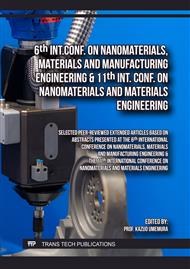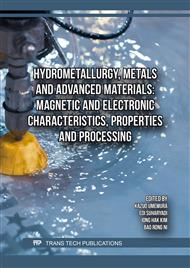p.3
p.11
p.17
p.25
p.33
p.41
p.53
p.59
Influence of Casting Parameters on the Nodule Count in Ultrafine Spheroidal Graphite Iron
Abstract:
The demand for lightweight and high-strength materials in automotive applications has been a driving force for research and development of ductile iron. This study investigates the influence of casting parameters on the nodule count of ultrafine spheroidal graphite iron, as nodule count is the major factor for enhancing mechanical properties. Several heats of ductile iron were produced using an induction furnace, varying silicon content, carbon equivalent, mold preheating temperature, and inoculation levels. Optical Emission Spectrometry (OES) and image analysis were used to determine chemical composition and nodule count, respectively. Results showed that silicon content significantly affects graphite fineness (e.g. nodule count) and carbide formation, with a minimum of 3.7% silicon required to prevent carbide formation. Higher mold preheating temperatures and increased inoculation levels promote higher nodule counts by slowing down the cooling rates and promoting the heterogeneous nucleation of graphite. Microstructural analysis revealed that increasing silicon increased ferrite fraction and decreased pearlite. The results suggest optimal casting parameters to maximize nodule count and enhance the strength and ductility of ultrafine spheroidal graphite iron.
Info:
Periodical:
Pages:
17-23
Citation:
Online since:
June 2025
Price:
Сopyright:
© 2025 Trans Tech Publications Ltd. All Rights Reserved
Share:
Citation:



